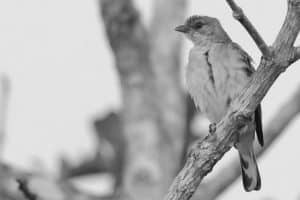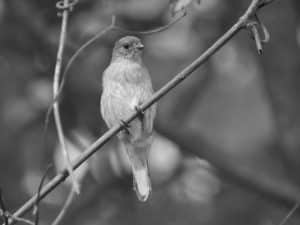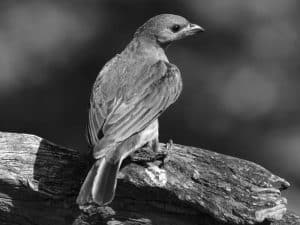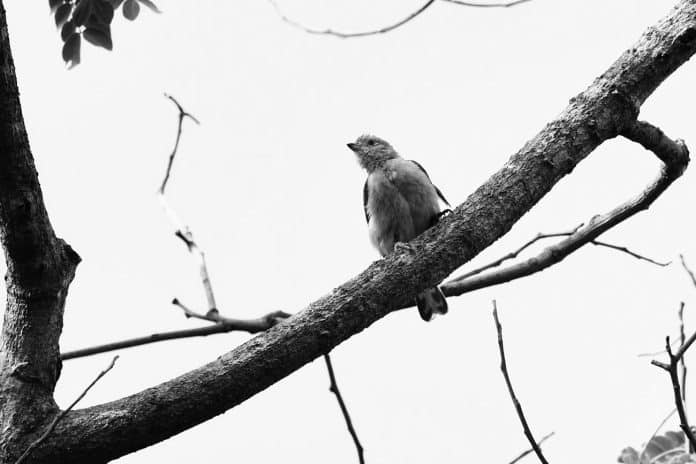Introduction to the Pallid Honeyguide
The Pallid Honeyguide (Indicator meliphilus), also known as the Eastern Honeyguide, is a small bird species found in the beautiful canopies of Tanzania. With its subtle elegance and unique behaviors, the Pallid Honeyguide has captured the attention of bird enthusiasts and researchers alike. In this article, we will delve into the habitat, physical characteristics, behaviors, conservation status, research efforts, and ecotourism opportunities related to the Pallid Honeyguide in Tanzania.
Habitat and Distribution of the Pallid Honeyguide in Tanzania

The Pallid Honeyguide is primarily found in the woodlands and forests of Tanzania. It has a relatively wide distribution across the country, including the Eastern Arc Mountains, the coastal forests, and the miombo woodlands of the interior. These habitats provide the Pallid Honeyguide with a diverse range of food sources, nesting sites, and suitable conditions for breeding.
Physical Characteristics of the Pallid Honeyguide
The Pallid Honeyguide is a small bird, measuring around 12 to 13 centimeters in length. It has a distinct pale grey plumage, which blends seamlessly with the dappled sunlight filtering through the canopies. The bird’s wings are short and round, allowing for agile flight through the dense vegetation. Its bill is slender and slightly curved, perfect for extracting insects and larvae from tree bark. The Pallid Honeyguide also has a unique feature called “honeyguiding,” where it displays a pale yellow throat patch during courtship and territorial displays.
Unique Behaviors and Adaptations of the Pallid Honeyguide
One of the most fascinating behaviors of the Pallid Honeyguide is its mutualistic relationship with humans. This bird species has evolved to guide and lead people to beehives, where it can feed on the wax and larvae left behind after the honey extraction. The Pallid Honeyguide uses a distinctive call to communicate with humans, who in turn benefit from the bird’s guidance. This behavior has been observed among the local communities in Tanzania, where the Pallid Honeyguide is known as “kuyu.”
Conservation Status and Threats to the Pallid Honeyguide in Tanzania
The Pallid Honeyguide is currently listed as a species of least concern by the International Union for Conservation of Nature (IUCN). However, like many other bird species, it faces several threats to its survival in Tanzania. Habitat loss due to deforestation, agricultural expansion, and infrastructure development poses a significant challenge for the Pallid Honeyguide. Illegal trapping for the pet trade and climate change also contribute to the decline in its population. Efforts are being made to raise awareness about the conservation needs of the Pallid Honeyguide and protect its habitats.
Research and Conservation Efforts for the Pallid Honeyguide

Researchers and conservation organizations in Tanzania are actively studying the Pallid Honeyguide to better understand its behaviors, breeding patterns, and habitat requirements. By conducting scientific surveys, monitoring populations, and engaging with local communities, these efforts aim to develop effective conservation strategies. Additionally, research initiatives focus on promoting sustainable livelihoods that benefit both the Pallid Honeyguide and the local people.
Ecotourism and Birdwatching Opportunities to Spot the Pallid Honeyguide in Tanzania
Tanzania offers exciting ecotourism opportunities for bird enthusiasts to spot the Pallid Honeyguide in its natural habitat. Many national parks and conservation areas, such as the Udzungwa Mountains National Park and the Selous Game Reserve, provide excellent birdwatching experiences. Knowledgeable guides and local experts can assist visitors in identifying and observing the Pallid Honeyguide and other avian species. These ecotourism initiatives not only contribute to the local economy but also raise awareness about the importance of conserving the Pallid Honeyguide and its habitat.
Interesting Facts and Trivia about the Pallid Honeyguide
- The Pallid Honeyguide is known for its ability to mimic the calls of other bird species, making it challenging to locate in the dense forests.
- It has a specialized brush-like tongue that helps it feed on nectar and honey.
- The Pallid Honeyguide is a cooperative breeder, with multiple individuals assisting in nest construction and raising young.
- Females of this species have a longer bill compared to males, which allows them to extract insects from deeper crevices in trees.
Tips for Photographing the Pallid Honeyguide in Tanzania

Capturing stunning photographs of the Pallid Honeyguide requires patience, skill, and a deep understanding of its behavior. Here are some tips to enhance your photography experience:
- Use a telephoto lens to get close-up shots of the Pallid Honeyguide without disturbing its natural behavior.
- Be mindful of the lighting conditions in the forested canopies, as they can create challenging exposure situations. Adjust your camera settings accordingly.
- Take advantage of the unique honeyguiding behavior by photographing the bird in action, guiding humans to beehives.
- Be respectful of the bird’s space and avoid causing any distress or disturbance during your photography sessions.
Conclusion: Appreciating the Subtle Elegance of the Pallid Honeyguide in Tanzanian Canopies
The Pallid Honeyguide’s presence amidst the Tanzanian canopies is a testament to the incredible diversity and beauty of the country’s avian species. Its subtle elegance, unique behaviors, and mutualistic relationship with humans make it a fascinating bird to study and observe. By appreciating and protecting the Pallid Honeyguide and its habitats, we can contribute to the conservation of Tanzania’s rich biodiversity and ensure that future generations can also enjoy the sight of this remarkable bird species.

































